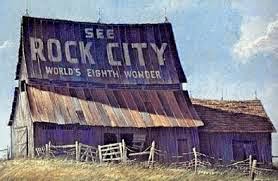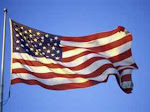Roswell King (1765 – February 15, 1844) was an American businessman, planter and industrialist.
King and his son,
Barrington King, founded Roswell Manufacturing Company in the
Georgia Piedmont, establishing a cotton mill and industrial complex. This became the basis of the town of
Roswell, Georgia in the 1830's.
Early life

Barrington Hall, built in 1842.
King was born in Windsor, Connecticut,
the son of Timothy King, a weaver and Revolutionary naval commander,
and Sarah (Fitch) King. At the age of fifteen, he moved to
Darien, Georgia and started working. His early professional life included jobs as
surveyor in Glynn County, and
Justice of the Peace in McIntosh County.
Plantation manager
King eventually became manager of
Major Pierce Butler's rice and cotton plantations on Butler and St. Simons
islands, Georgia, where he worked until 1820. The plantations covered
hundreds of acres on each island. A total of 500 slaves worked and lived
on the two plantations. King also had a plantation of his own and
numerous slaves to work it in Darien.
In the 1830's, King moved his family from the coast to the
Piedmont area around
Vickery Creek
(referred to as Cedar Creek at the time), the area of the future town
of Roswell. King had identified this as a good area for the construction
of a cotton mill. He had the idea to combine cotton production and
cotton processing at the same location. He invited planter friends
James Stephens Bulloch and
Archibald Smith to join him in the new enterprise.
Roswell, Georgia
When he moved, King transported 36 enslaved African Americans with him from his plantation and bought another 42 slaves in
Darien to work on constructing the mill, infrastructure and other buildings at the new complex.
[1] The slaves likely built much of his house(s) as well. They brought
Gee Chee culture from the coast to the Piedmont area.
King dammed the creek to power a
cotton mill,
which became fully operational by the latter half of the decade. The
mill was incorporated as the Roswell Manufacturing Company by an act of
the Georgia General Assembly on December 11, 1839. His son
Barrington King served as the company president. Other people named in the act included
John Dunwoody and
James Stephens Bulloch.
After living in temporary homes for his first years in the area, Roswell King (who was recently widowed) moved into
Primrose Cottage in 1839 along with his recently widowed daughter
Eliza King Hand and her children. He died on February 15, 1844.
He was buried in what is now referred to as
Founders' Cemetery on
Sloan Street in Roswell, just to the north of the original location of
the mill. Some of his personal "servants" (enslaved African Americans)
were buried near him in unmarked graves.
Barrington King
Barrington King and
Roswell Manufacturing Company continued to depend
on the skills and labor of enslaved African Americans as he built the
business in Roswell. According to the 1850 Census Slave Schedules, King
personally held 70 slaves, and he controlled another 13 slaves held in
the name of Roswell Manufacturing Company.
In 1860, King still held 47 slaves. He may have sold some when the heavy construction work was finished.
Plantation managers
As powerful and successful men, Roswell King and his sons lived out
some of the complexities of their times. Roswell King, Sr. had conflicts
with
Major Pierce Butler
when he managed his island plantations in Georgia, because Butler took a
more moderate approach to the treatment of slaves than King did. Butler
was one of the wealthiest men in the South when King worked for him.
After he left in 1820, Butler hired his son Roswell King, Jr. as
plantation manager.
In the winter of 1838-1839, the new owner Pierce (Mease) Butler and his wife
Fanny Kemble stayed for the winter at Butler and St. Simons islands.
According to Kemble's journal of the visit, Roswell King was reported to have fathered one or more
mixed-race children by enslaved women.
She wrote that Bran, a mixed-race slave said to be King's son, was
conceived and born while King's wife was still alive. He became a driver
(supervisor) of other slaves on the plantation.
Roswell King, Jr. (1796–1854), the second son and namesake, took over
as manager of the Butler plantations in 1820 and worked there until
1838, after which he went to his own plantation in Alabama. Kemble wrote
in her journal, published in 1863, that he was said to have fathered
several mixed-race children during his tenure. She identified them as
including Renty, the twins Ben and Daphne, and Jem Valiant, whose
mothers were the slave women Betty, Minda, Judy, and Scylla (her child
was unidentified).
These children were born into slavery, as under slave law, children took the status of their mother by the principle of
partus sequitur ventrem.
Kemble attested to these children by her direct observations and from
stories told her by slaves during her residence. During this period, she
complained to her husband about King, Jr.'s harsh treatment of slaves,
as the women especially appealed to her for help to lighten their work.
With their marriage deteriorating, Butler threatened Kemble with no
access to their daughters if she published any of her observations about
the plantations.
Kemble did not publish her account until 1863, long after their
divorce in 1849 and after her daughters had reached their majority.
According to the historian
Catherine Clinton,
King Jr.'s granddaughter,
Julia King, wrote to a friend in 1930, saying
that Kemble had told lies about her grandfather because he refused to
return her affections.
The historian Bell documented that the marriage of Kemble and Pierce
Butler was fraught with conflict by that time, and was undermined by
episodes of spousal infidelity. It ended in separation in 1847 and
divorce in 1849.
According to Clinton, Kemble may have falsified portions of her journal.
The historian Deirdre David says some readers have found Kemble's
descriptions of slaves' appearances and lives to be racist. But, David
notes that Kemble's views on race were "not anomalous" in the
19th-century among English writings on the topic.
In that context, David described Kemble's descriptions as "relatively mild and moderately conventional."
(Historians of the period have noted such contradictions in many contemporary writings, including those of Thomas Jefferson, who opposed slavery but was prejudiced against blacks.)
David notes that King Jr. published his own account of the "brutal system he deplored" in a long letter to
The Southern Agriculturalist
on 13 September 1828, in which he said that overseers were responsible
for much of the cruelty to slaves. He preferred to use differing work
rather than physical punishment, for instance, and said he did not
condone whipping. David notes that if his account in his letter is
accurate, the diet and treatment of slaves on the Butler plantation
seemed to have deteriorated dramatically between 1828 and what Kemble
saw and reported in 1838, shortly after King Jr. had left.
Kemble's journal appears to quote King Jr.
verbatim:
"I hate the institution of slavery with all my heart; I consider it
an absolute curse wherever it exists. It will keep those states where it
does exist fifty years behind the others in improvement and
prosperity."
She reveals his contradictions of character.
External links
"Chapter 6 Historic Preservation Element" (pdf). City of Roswell, Georgia, Comprehensive Plan 2025. November 7, 2005. p. 172. Retrieved 2008-01-22.
partus sequitur ventrem
Primrose Cottage
Gee Chee
Darien, GA
Archibald Smith
Source: Internet






































